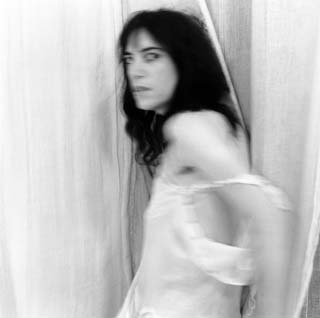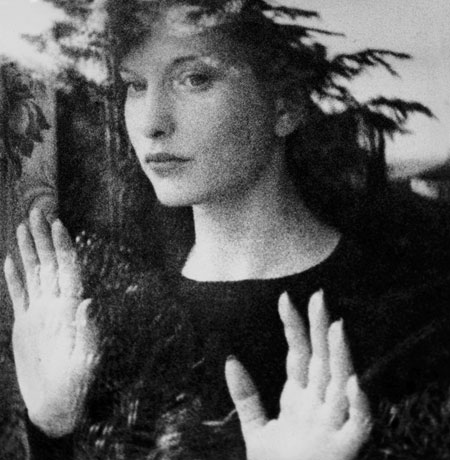
Elizabeth Bishop
 Faithful to an inner vision, truly painterly and also equally blessed with exact poetic pitch, Elizabeth Bishop is a master of consumed and consuming loss. The Man-Moth, a character from an early surreal poem of the same name, has a party-piece: to palm and swallow his most precious possession, a tear. Agonizingly lonely, he eats tears like food, gorging on their beauty and the visionary powers they bestow. But sorrow is secret and discreet.
Faithful to an inner vision, truly painterly and also equally blessed with exact poetic pitch, Elizabeth Bishop is a master of consumed and consuming loss. The Man-Moth, a character from an early surreal poem of the same name, has a party-piece: to palm and swallow his most precious possession, a tear. Agonizingly lonely, he eats tears like food, gorging on their beauty and the visionary powers they bestow. But sorrow is secret and discreet.
‘The Man-Moth’ is almost an autobiography in miniature. In life, Bishop hid her sexuality from the public, hid her grief at the loss of her irrecoverably broken grieving mother who was confined to an asylum when Bishop was a very young child, and hid as much she could her guilt at the suicide of her beloved partner Lota de Maçedo Soares. Her life was hardly uneventful. Yet she doubted all along that her experiences were adequately interesting subject-matter for poems.
How blind she was to her brilliance. Read her letters and you see a mind constantly transfiguring its experience into something radiant, self-effacing and funny. And this prose epic (she was a prolific correspondent) is distilled and distilled into her small output of poetry. It was real poetry, a tiny condensed world like the Man-Moth’s tear.
A fundamentalist of aesthetic and moral scruple, she dedicated her life to art but believed that art is not worth wrecking love and friendship for. She perfected ‘the work’ whilst trying to salvage what she could of her life. Read her aloud for the tone she manages, the melancholy gentleness she found in George Herbert and so perfectly absorbed. The tone she so admires in Herbert’s poem ‘Discipline’ (‘Throw away thy rod,/throw away thy wrath:/O my God,/Take the gentle path’) she palms and transfigures into the against-the-odds serenity of the very first poem of hers that I encountered: ‘At the Fishhouses.’ During one particularly electrifying university tutorial I was asked to read the poem aloud. It begins:
‘Although it is a cold evening
Down by the fishhouses
An old man sits netting,
his net, in the gloaming almost invisible,
a dark purple-brown,
and his shuttle worn and polished.’
Reading these lines felt like walking into a calm shining sea. Sight-reading a poem in a tutorial was usually something that made me mildly nervous. But I didn’t stumble once among these marvellous cadences, moved as I was by the beauty of the poem’s surface calm and the undertow of struggle and despair, momentarily abandoned.
Patti Smith
 A paper bag full of ripe cherries: for years I associated the punk icon and artist Patti Smith with this particular image. So picture eating them as Michael Stipe, singer with the band R.E.M., once did as a teenager, wearing a pair of his parents’ ‘crappy headphones’ as he sat up all night to listen, over and over again, to Patti Smith’s seminal punk album Horses (1977). His reaction is also very Patti Smith. He reports that as he listened he kept saying ‘Holy shit’ and ‘Fuck’ in astonishment. Then he was sick. So Patti Smith, so punk rock. And of course he had to form a band after that.
A paper bag full of ripe cherries: for years I associated the punk icon and artist Patti Smith with this particular image. So picture eating them as Michael Stipe, singer with the band R.E.M., once did as a teenager, wearing a pair of his parents’ ‘crappy headphones’ as he sat up all night to listen, over and over again, to Patti Smith’s seminal punk album Horses (1977). His reaction is also very Patti Smith. He reports that as he listened he kept saying ‘Holy shit’ and ‘Fuck’ in astonishment. Then he was sick. So Patti Smith, so punk rock. And of course he had to form a band after that.
But it was her album Easter that affected me most deeply. On loan from a friend, this LP’s cover was even more liberating than the songs it contained. Smith appears on it with shaggy hair, no makeup, boyish. She wears a wonderful, simple pendant and a delicate (was it white or pink?) camisole, no bra underneath, one arm raised to reveal an unshaven armpit. In my mind, the image took on quasi-religious significance. I didn’t analyse it—nothing so clear-cut as that—but I gazed at it until the marks of her rock’n’roll sainthood pierced me. The hair, the camisole, the armpit, the face: all were emblems of personal, sexual and artistic freedom.
By the time Patti Smith was twenty she had quit college (she was training to be a teacher) and had left working class New Jersey for New York and a series of chance encounters that would lead her to live a life of monkish hedonism as the lover and co-conspirator of the photographer Robert Mapplethorpe. Their relationship is movingly and lyrically evoked in Smith’s recent memoir Just Kids, a book that reads like an instruction manual for anyone wanting to live a life dedicated to art. Saint Rimbaud presides over its pages, the poet’s Illuminations guiding both Mapplethorpe and Smith to ever greater absorption in their work: drawings, beatnik poems, collage, even jewellery. In those early days, their creative endeavours seem the work of one person, not two. They go hungry together, they have to save up even for hotdogs, sharing one between two, and above all they concentrate— in small rooms, in silent unison.
Smith’s book is an urban fairytale where the protagonists are two enchanted children. For a long time, nothing seems to touch them. It is as if they are protected by their dedication. This is the sixties and seventies. New York is a beaten-up bohemian paradise. The Chelsea Hotel is a castle for the couple, and Smith sets up her writing station in the lobby, as if wanting to catch in her notebooks the creative flow of the place. Only the 80s and the advent of HIV removes the charm, and from here on, Just Kids transforms itself into one of the very best AIDS memoirs, an elegy for Mapplethorpe --- who died of the disease in 1989, --- and also for his generation.
Maya Deren
 ‘Maya in the city has a dream.’ James Merrill, one of the few writers to celebrate Maya Deren’s achievement, opens with these words a section from ‘The Book of Ephraim’: a section concerned with his chronicle of Maya’s highly cinematic dream of heaven. Anyone who watches her films will quickly realise that they are all miniature dreamscapes of afterworlds and underworlds. Not much more than fifteen minutes apiece, they are each a weave of images without a soundtrack. Deren, working most productively in the 1940s, deliberately and brilliantly returns film to silence.
‘Maya in the city has a dream.’ James Merrill, one of the few writers to celebrate Maya Deren’s achievement, opens with these words a section from ‘The Book of Ephraim’: a section concerned with his chronicle of Maya’s highly cinematic dream of heaven. Anyone who watches her films will quickly realise that they are all miniature dreamscapes of afterworlds and underworlds. Not much more than fifteen minutes apiece, they are each a weave of images without a soundtrack. Deren, working most productively in the 1940s, deliberately and brilliantly returns film to silence.
She does so in order to dance. She was a dancer by profession. Such films as At Land, Meshes of the Afternoon and Ritual in Transfigured Time are dreams enacted, but they are also dances: narrative dances and dances of cinematic technique. Deren, unlike many film-makers, is less interested in (still) images than she is in moving pictures. Ritual in Transfigured Time has a young black actress in black clothes threading herself as if invisible through a party of drinking, dancing guests. Interiors are woven with exteriors, cityscapes with seascapes, and no character moves without dancing. Stylized hypnotic serenity characterises her films, serenity even in the face of death; death who prowls through these scenes, stalking their female protagonists. Mirrors are favourite props, and mirrors, especially broken mirrors, are emblems of beauty, the fading of beauty, and death.
The sea, too, is a mirror. In At Land, the protagonist, played by Deren herself, begins as a body washed up on a beach. Then some simple backwards footage: the reversal of a breaking wave. The woman wakes from where she fell—gravity pulls her upright. We see her hands move with seductive slowness over and around a large piece of driftwood. There is a game of chess at the seashore played by two women. A pawn is knocked off the board into the sea and Deren’s camera follows it as it is pulled over rocks and out into the ocean. Twists of water and rock, the innocuous pawn falling away: everything is seen as though it is floating, as though the mind that made the film is floating in what Merrill calls ‘a calm shining sea.’
Deren’s cinematic dances of calm and beauty did not mirror the ending of her life. Merrill’s poem documents her attempts to stay young and beautiful, but tactful as he always is, he underplays the suffering that marked her last days. She died aged 44, having become addicted to quack-prescribed amphetamine diet-pills. She starved herself to death, and to date there is very little in the way of mainstream biographical celebration. The academy knows her work, but who else? Merrill calls her ‘maiden, muse and wife.’ All the roles that this dancer, actor and filmmaker took on consumed and destroyed her. But in truth she was no-one’s muse except her own.